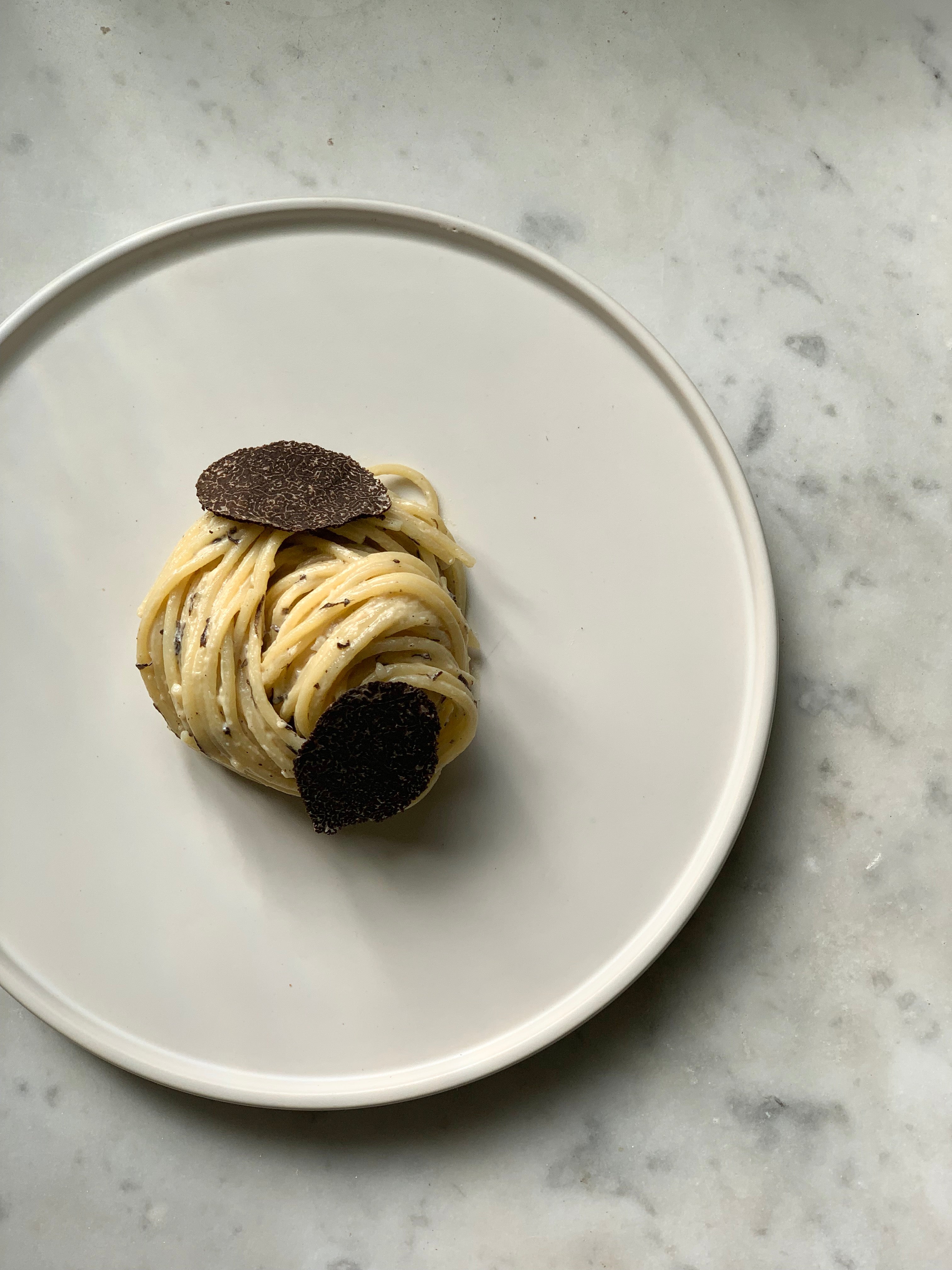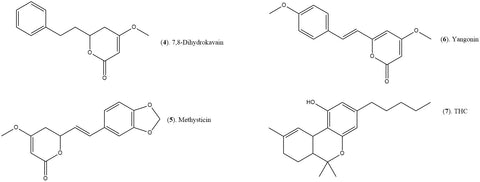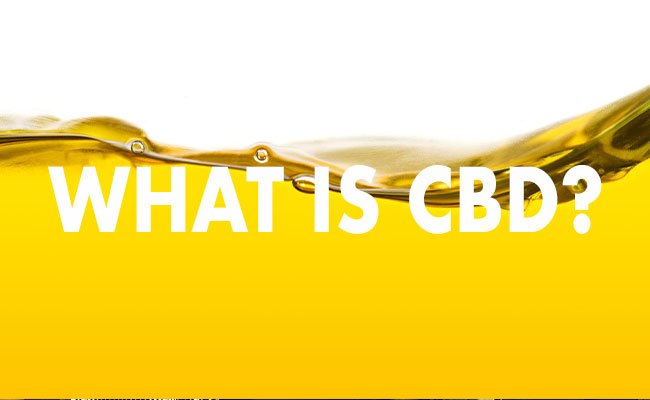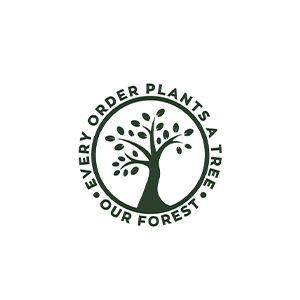
5 Plants with Cannabinoids – That Are Not Cannabis
WRITTEN BY DR. SUSAN EGBERT AND DR. SWATHI
Cannabinoids have been of particular interest in recent years due to the potential benefits for patients' mood. Although many would think that cannabinoids are strictly to the Cannabis spp, there are in fact some other plants that actually contain this particular class of metabolites. This article will cover some of the other plants that can be found that have some metabolites that are just like the cannabinoids found in Cannabis spp or mimics of it.
You may be wondering–why are we talking about cannabinoids? The human body has a system called the endocannabinoid system in which it relies on endocannabinoids to ensure proper physiological function. Cannabinoids found in plants (phytocannabinoids) interact in our bodies like our endocannabinoids.
|
CB1 (cannabinoid type receptor 1) |
Motor activity, thinking, motor coordination, appetite, memory, pain perception |
|
CB2 (cannabinoid type receptor 2 receptor) |
Gut, kidneys, immune system, pancreas, adipose tissue, skeletal muscle, bone, eye, tumors, reproductive system, respiratory system, immune system, respiratory tract, skin, central nervous system, cardiovascular system, liver |
Table 1. Receptors of the human endocannabinoid system (ECS) and where they are in the human body. To learn more about the ECS, click here.
Note: Chemical structures mentioned below are only to represent similarity of metabolites and are not expected for patients to be chemistry experts. Parts that are of main focus will be highlighted to help with clarity.
Cacao

Figure 1. Comparison of (2) and (3) from cacao to anandamide (1) that is found in the human endocannabinoid system
Traditionally used to help with mood and energy levels, cacao contains cannabinoid mimetics that go to the cannabinoid (CB1) receptor like THC does (2,4). N-oleoylethanolamine (2) and N-linoleoyl ethanolamide (3) mimic anandamide (Figure 1) that is in the human body that goes to the CB1 receptor. Highlighted in Figure 1 shows the similarity in terms of the chemical structures and the reason why compounds of cacao follow the CB1 pathway in the body. Other structures (like theobromine and tryptophan that are found in cacao) also can interact with the human endocannabinoid system even though they are mostly known for interacting with it in other ways. All the metabolites that are mentioned are the reason why we feel the way we do whenever we have something with cacao in it (including chocolate!). For more information regarding other metabolites and their bioactive properties, please refer to our previous post.
Kava (Piper methysticum)

Figure 2. Structures of (4)-(6) that come from Kava in comparison to (7) that comes from Cannabis spp.
Kava, also referred to as kava kava, is a traditional ceremonial drink in the Pacific that is known to help with sleep and mood Kava contain kavalactones (Figure 2) that interact with the endocannabinoid system through the CB1 receptor much like (2) and (3) (7). 7,8-Dihydrokavain (4), methysticin (5), and yangonin (6), are the well known kavalactones as having being investigated specifically to understand how it interacts with CB1.7 These metabolites help us understand why kava induce certain endocannabinoid response in our body.
Black Truffles (Tuber melanosporum)
Black truffles are used mostly in cooking with little information on how it has been used traditionally as a herbal product. There have been studies to show that black truffles have a certain level of anandamide, which is an endogenous ligand that binds to CB1 (8). More studies would have to be conducted in order to understand the full metabolite profile of black truffles to see if there are any other cannabinoids/cannabinoid mimics that exist.
Sunflower (Helianthus spp.)
Sunflowers are another item that we think of the seeds that we consume and the oil that comes from it. Traditional usage of sunflowers have been mostly for regulation of respiratory health and related concerns. Although sunflowers do not have cannabinoids directly, there are some species in the genus (Helianthus spp) that do have cannabinoids. Helichrysum and Heliopsis are two species within the sunflower genus that have cannabinoids that interact with our endocannabinoid system. Helichrysum contains cannabigerol which is a cannabinoid that is also found in the Cannabis spp. Heliopsis contain alkamides that are structurally similar to anandamide (Figure 3) (10). There are other metabolites reported in heliopsis but whether it is active in the endocannabinoid system is not understood (11). To learn more about some other facts about sunflower please refer to our post on vitamin E and cooking oils.

Figure 3. Comparison of affinin (8) from heliopsis and anandamide
Coneflower (Echinacea spp.)
Coneflower is often interchanged with Echinacea when researching this plant. Coneflower, like sunflower, is traditionally used to regulate respiratory health. Much like heliopsis, coneflowers also have alkylamides that are active in the human endocannabinoid system. (9) and (10) have been shown to have activity at the CB2 receptor which is unique to the the others that have been mentioned so far .14 You can learn more about coneflower and how it affects the endocannabinoid system here.

Figure 4. (9) and (10) from coneflower which has similar groups to (1)
This is a short list of some plants that contain cannabinoids or cannabimimetics that can act on the human cannabinoid system. There are definitely more that can be added to this list but that would make the length of this article longer than necessary. As shown from the five plants so far, there are certain criterias that are necessary in order to see similar activity of the cannabinoids of Cannabis spp. Hence, if you are wondering why you’re feeling like you just had some Cannabis, take a look at some of the foods and supplements that you are taking to see if they have some similar metabolites.
References:
- Gertsch J, Pertwee RG, Di Marzo V. Phytocannabinoids beyond the Cannabis plant - do they exist?. Br J Pharmacol. 2010;160(3):523-529. doi:10.1111/j.1476-5381.2010.00745.x
- Tudge L, Williams C, Cowen PJ, McCabe C. Neural effects of cannabinoid CB1 neutral antagonist tetrahydrocannabivarin on food reward and aversion in healthy volunteers. Int J Neuropsychopharmacol. 2014;18(6):pyu094. Published 2014 Dec 25. doi:10.1093/ijnp/pyu094
- Sheikh NK, Dua A. Cannabinoids. [Updated 2022 May 2]. In: StatPearls [Internet]. Treasure Island (FL): StatPearls Publishing; 2022 Jan-. Available from: https://www.ncbi.nlm.nih.gov/books/NBK556062
- Chayasirisobhon S. Mechanisms of Action and Pharmacokinetics of Cannabis. Perm J. 2020;25:1-3. doi:10.7812/TPP/19.200
- di Tomaso E, Beltramo M, Piomelli D. Brain cannabinoids in chocolate. Nature. 1996;382(6593):677-678. doi:10.1038/382677a0
- Howlett AC, Blume LC, Dalton GD. CB(1) cannabinoid receptors and their associated proteins. Curr Med Chem. 2010;17(14):1382-1393. doi:10.2174/092986710790980023
- Ligresti A, Villano R, Allarà M, Ujváry I, Di Marzo V. Kavalactones and the endocannabinoid system: the plant-derived yangonin is a novel CB₁ receptor ligand. Pharmacol Res. 2012;66(2):163-169. doi:10.1016/j.phrs.2012.04.003
- Pacioni G, Rapino C, Zarivi O, et al. Truffles contain endocannabinoid metabolic enzymes and anandamide. Phytochemistry. 2015;110:104-110. doi:10.1016/j.phytochem.2014.11.012
- Olivas-Quintero S, López-Angulo G, Montes-Avila J, et al. Chemical composition and biological activities of Helicteres vegae and Heliopsis sinaloensis. Pharm Biol. 2017;55(1):1473-1482. doi:10.1080/13880209.2017.1306712
- Cilia-López VG, Juárez-Flores BI, Aguirre-Rivera JR, Reyes-Agüero JA. Analgesic activity of Heliopsis longipes and its effect on the nervous system. Pharm Biol. 2010;48(2):195-200. doi:10.3109/13880200903078495
- Hajdu Z, Haskó J, Krizbai IA, et al. Evaluation of lignans from Heliopsis helianthoides var. scabra for their potential antimetastatic effects in the brain. J Nat Prod. 2014;77(12):2641-2650. doi:10.1021/np500508y
- Woelkart K, Bauer R. The role of alkamides as an active principle of echinacea. Planta Med. 2007;73(7):615-623. doi:10.1055/s-2007-981531
- Liu R, Caram-Salas NL, Li W, Wang L, Arnason JT, Harris CS. Interactions of Echinacea spp. Root Extracts and Alkylamides With the Endocannabinoid System and Peripheral Inflammatory Pain. Front Pharmacol. 2021;12:651292. Published 2021 Apr 27. doi:10.3389/fphar.2021.651292
- Raduner S, Majewska A, Chen JZ, et al. Alkylamides from Echinacea are a new class of cannabinomimetics. Cannabinoid type 2 receptor-dependent and -independent immunomodulatory effects. J Biol Chem. 2006;281(20):14192-14206. doi:10.1074/jbc.M601074200
–
This article was edited by Dr. Swathi and was written by Element Apothec Scientific Communications Intern, Dr. Susan Egbert. She is a pharmacist and Doctor of Philosophy (PhD) candidate studying Natural Products Chemistry at University of Manitoba in Winnipeg, Manitoba, Canada.










